Purifying water from a well: what to do if the water in the well is cloudy or turns yellow
Well water is not always clean, healthy and tasty.It may contain foreign impurities, pathogenic bacteria and even toxic substances. Only a detailed water analysis will help you find out whether the “extracted” liquid is suitable for drinking and household needs.
If the results of the study turn out to be unsatisfactory, this is a reason to take a closer look at the issue of its purification and filtration.
The article provides detailed information on how to organize testing of the quality composition of water, and which laboratories should be trusted. We described how water is purified from a well, and what stages of water treatment are required in a given situation.
The content of the article:
Dangers of using contaminated water
A person is 70% water, so its impact on our health is colossal. Consumption of low-quality liquid leads to a decrease in immunity and greatly increases the risk of various viral, bacterial and allergic diseases.
In addition, the use of contaminated water in everyday life is fraught with damage to expensive equipment (dishwashers and washing machines, boilers, kettles), clogged pipes, the appearance of an unpleasant, difficult-to-remove plaque on plumbing fixtures.
Therefore, to preserve your own health and the contents of your wallet, it is very important to understand what kind of water flows from the taps in the house.
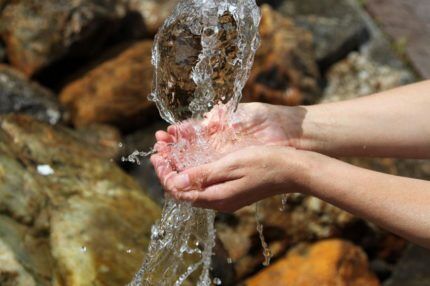
Water testing: what is important to know?
Laboratory methods of testing water from a well are carried out to determine its potability. In some cases, experts strongly recommend their implementation.
Reasons for analysis
Good reasons to check water quality include:
- Sale of country real estate. The conclusion of experts about the high quality of water on the site greatly increases its attractiveness in the eyes of buyers when selling.
- Buying land. Having purchased a plot of land, it is necessary to carry out a water analysis to be sure of its safety.
- The occurrence of health problems. The increase in the number of colds and gastrointestinal disorders can be directly related to the presence of harmful impurities in drinking water.
- Desire to purchase a water purification system. To select the optimal filtration unit, it is imperative to find out the degree of contamination of the liquid.
It is mandatory to conduct a water analysis in case of deterioration in its organoleptic characteristics - color, taste, smell, transparency. If the color changes upon contact with air: it turns yellow or even turns brown, stains remain on clothing and plumbing fixtures, it most likely contains an increased concentration of iron.
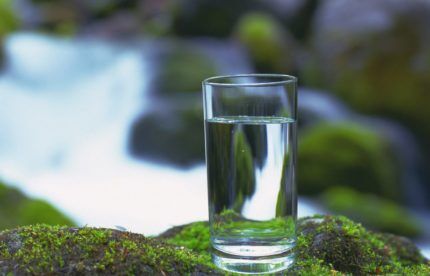
The smell of rotten eggs coming from the liquid indicates an excess of hydrogen sulfide.Under no circumstances should you drink such water, as it can be toxic. Increased mineralization gives the liquid a salty taste.
Constant consumption of water with a large amount of sodium ions can aggravate the course of hypertension, and, in general, is not good for health.
The appearance of cloudy water in a well should certainly alert you - this may indicate both mechanical contamination of the liquid and chemical and biological “problems” of the source.
The quality of drinking well water should be assessed regularly - at least once every 1-2 years. The composition of water changes periodically - both due to natural climatic reasons (flood, drought) and due to human fault.
Chemical wastes and toxic substances seeping into the soil can penetrate into aquifers, and these changes, unfortunately, are not noticeable to the naked eye.
Therefore, you should always “keep your finger on the pulse” by periodically checking the composition of the water you consume.
As for assessing the quality of water in a new well, there is definitely no need to rush here. It is recommended to conduct a thorough washing of workings and wait 3-4 weeks, when the contamination caused by the installation work will disappear on its own.
Features of choosing a laboratory
There are many laboratories that carry out water research. But preference should be given exclusively to trusted companies that have licensed confirmation of the right to conduct analyzes.
Experts recommend contacting only large companies with many years of experience in this service sector. Don't be tempted by the low price; You should focus only on the quality of work and real customer reviews.
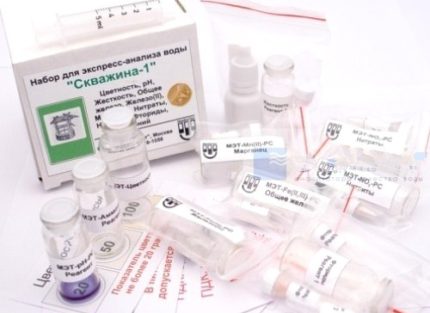
When contacting small companies, it is worth considering the fact that they are often intermediaries and do not have their own laboratories, i.e. “redirect” samples for analysis to other offices.
In this case, you can’t count on getting results quickly. Therefore, when choosing a laboratory, always ask whether the company has its own resources to perform the necessary tests, as well as a license with the right to conduct research.
Testing stages and costs
The first stage of the study is competent water sampling. This process can either be entrusted to laboratory staff or performed independently.
In the second case, it is very important to pay attention to the following points:
- It is advisable to take water containers from the laboratory.. The one where the analysis will be performed. These containers have undergone special treatment and have added preservatives to ensure the stability of the chemical composition of the liquid. Using glassware prepared by the laboratory is the key to obtaining the most reliable test results.
- Laboratory containers should not be rinsed. You should also not drain water from them and refill them.
- Use clean containers. If it is not possible to take bottles from the laboratory, you can use clean glass or plastic containers from drinking water.
Please note that containers for sweet drinks that have not been treated with copious amounts of running water are absolutely not suitable! Sampling for the content of petroleum products, fats and other organic indicators should be carried out in dark glass containers.
Self-sampling of water samples significantly reduces the final cost of the study, but carries the risk of distorting objective data if the process is neglected.
Be sure to follow the following sampling rules:
- All manipulations must be performed with clean hands, thoroughly washed with soap.
- Your own containers for delivering water to the laboratory must be absolutely clean and free of foreign odors (the optimal container capacity is 1.5-2 liters). Before filling, it should be rinsed three times with the water to be analyzed.
- The draining time of water from the autonomous water supply before sampling should be at least 5 minutes.
- Filling the container must be done in a thin stream along the wall of the container. Do not change the water pressure by opening or closing the tap.
- The container should be filled with water to the top (to the very top): air in the container can affect the test results.
- Water bottles must be signed - indicate the time, place and date of sampling.
- It is very important that samples reach the laboratory without delay - no later than 2 hours after collection. If prompt delivery is not possible, the sample should be refrigerated. This will increase the “shelf life” of the selected water to 12 hours.
To assess the quality of well water, various types of analyzes are carried out - chemical, organoleptic, microbiological, advanced. The cost of the study depends on the number of indicators determined and the set of additional services. On average, a standard analysis will cost 1500-2000 rubles, a full one - 4000-5000 rubles.
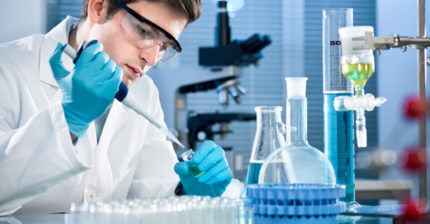
All standards that water from a private water supply system must comply with are established in section 4 of SanPiN 2.1.4.1175-02.
Among the mandatory indicators for assessing liquid quality:
- smell;
- color;
- turbidity;
- taste;
- pH value (pH);
- nitrates;
- general hardness;
- permanganate oxidation;
- general mineralization;
- chlorides;
- sulfates.
The list of indicators for analysis recommended by many laboratories also includes iron, nitrites, fluorides, and manganese.
If you regularly submit water for testing, you can limit yourself to analysis using a basic list of indicators, including only those items for which exceedances of permissible values are most often recorded: pH, hardness, odor, iron, manganese, permanganate oxidation, total mineralization.
Such an analysis will make it possible to draw general conclusions about the quality of well water, but will not make it possible to assess its overall compliance with established standards.
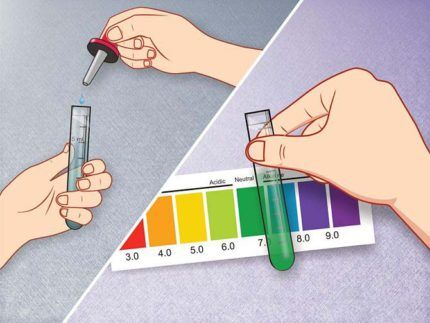
Microbiological examination of liquid is carried out according to the following indicators:
- total microbial count;
- common coliform bacteria;
- coliphages;
- thermotolerant colimorphic bacteria.
You can get test results from most large laboratories within 2-5 days. Small firms cope a little slower - they need 7-14 days to prepare a research protocol.
Well water treatment methods
Test results that fit all norms are excellent. In this case, you don’t have to worry about special additional filtration of the liquid.
However, if foreign impurities or dangerous concentrations of elements have been identified in the water, it is imperative to take care of its high-quality purification.
Usually water is purified in several stages. Their number is determined by the degree and types of pollution.
A complete well water purification scheme consists of the following elements:
- a coarse cleaning module consisting of one or more filters;
- iron filter;
- softener;
- carbon filter;
- disinfectant;
- installation for fine purification (preparation of drinking water).
The more levels it has water treatment system, the better quality of water is obtained at the outlet. However, you shouldn’t “overload” your wallet by purchasing the entire arsenal of cleaning devices - you need to solve real problems, confirmed by test results.
Method #1 - rough cleaning
This stage of water treatment is necessary to remove mechanical suspension from the liquid: large particles of clay and sand, rust, silt, and scale. Properly selected coarse filters ensure the smooth operation of finer filters - they are installed at the beginning of the water treatment system.
The liquid is purified from large impurities by passing it through a system of meshes.
Periodically mechanical filters become very dirty and require washing.To eliminate the need to dismantle elements and stop the water supply, it is recommended to install self-cleaning filters - they are cleaned by a jet stream.
Devices from the company will be a reliable choice Honeywell (USA) or Drufi (Germany).
You can build a well filter yourself, using perforated pipes or a mesh “sleeve”. Detailed information on the manufacture of the filtration element is presented in this article.
Method #2 - using softeners
A high concentration of magnesium and calcium salts makes water hard. Such water negatively affects the operation of plumbing equipment, as well as electrical appliances that use water.
Deposits on heating elements (scale), limescale on pipes, shut-off valves, shower head nozzles, etc. - only a small part of the possible consequences.
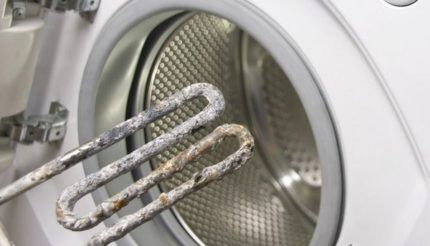
Softening well water is a task that can be solved in several ways. It is cheaper to do this using equipment that uses the method of proportional dosing of a special reagent that neutralizes hardness salts.
Such devices, for example, Quantomat from BWT, are a flask with a dispenser filled with a reagent.
The portions of the reagent measured by the dispenser depend on the volume of water passing through the neutralizer. Unfortunately, this method does not allow us to talk about complete softening of water, since magnesium and calcium salts are not removed from the liquid, but are only deactivated.
Only complex installations can provide complete softening, the operating principle of which is based on ion exchange - the replacement of calcium ions with sodium ions. To do this, the liquid comes into contact with an ion exchange resin.
The source of sodium ions is a solution of table salt. Such equipment is quite expensive, but its use in a country house for drinking well water preparation is quite justified.
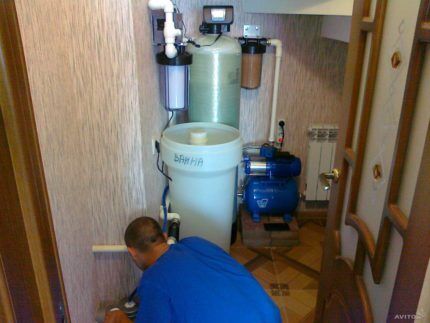
Method #3 - using iron removers
The average person often does not associate iron with a toxic substance. Therefore, many simply ignore the need to deferrize well water. But in vain. An excess of this element in drinking water can provoke a number of internal diseases and general weakening of the body.
Iron removal from water is carried out by special filters, the operating principle of which is based on the transformation of iron from a soluble form into an insoluble precipitate through its oxidation.
Oxidation of iron dissolved in a liquid can be carried out in two ways:
- reagent-free — artificial or natural aeration;
- reagent - with the help of chemicals.
The operating principle of reagent-free pressure units is as follows: forced saturation of water with oxygen occurs in a special aeration column located directly in front of the filter. The compressor pumps air there, oxidation of iron occurs and it precipitates. The sediment is retained in the thickness of the filter loading.
During water aeration, in addition to iron oxidation, a number of useful processes occur.In particular, the removal of hydrogen sulfide, a dangerous and toxic substance that has the smell of rotten eggs. Hydrogen sulfide is removed through an electromagnetic dump valve located at the top of the column.
The cost of pressure deferrizers is quite high, but this is fully justified by low operating costs and ease of maintenance.
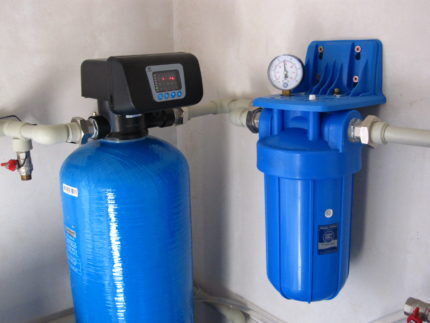
In reagent-free devices with natural aeration, iron oxidation occurs in a storage tank. This process takes much longer than with artificial air saturation. There is no compressor here. After oxidation, the pump pumps water directly into the iron remover.
Reagent-type filters remove iron using a catalytic method. Oxidation of the element occurs on the surface of the granules of a special medium with filtering capabilities, and the formation of compounds is retained in its thickness.
Such systems are highly efficient and compact. They are cheaper than reagent-free analogues, but require regular expenses for the purchase of reagents.
Method #4 - complete disinfection of water
Disinfectants are usually used at the final stage of water treatment. The main task of this equipment is to destroy bacteria and other microorganisms. The most common are ultraviolet sterilizers.
The disinfecting effect is achieved through a series of photochemical reactions. UV filters do not require any complex maintenance; they only need to periodically change the lamp.
It is important to note that the chemical composition of water does not change during the “sterilization” process.
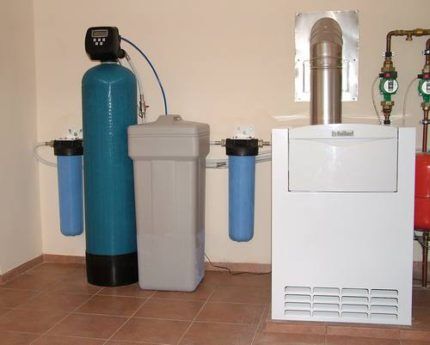
Method #5 - reverse osmosis installations
The most effective method of obtaining water with drinking parameters is its purification with installations reverse osmosis. In this case, the liquid is passed through a special membrane that retains absolutely all foreign impurities. The quality of water at the output of reverse osmosis systems is the highest possible, meeting the most stringent requirements.
The only drawback of reverse osmosis purification is the lack of mineral composition in the liquid. Special salt cartridges solve the problem. This equipment is quite compact; it fits easily under the kitchen sink.
The site has a series of articles dedicated to reverse osmosis systems:
- Reverse osmosis: harm and benefits of membrane purification of tap water
- How to choose a reverse osmosis filter: rating of the best manufacturers and their products
- DIY reverse osmosis: step-by-step assembly and installation instructions
Useful videos on the topic
A convincing argument for the importance of analyzing well water:
Review of the well water purification system in the cottage:
Advantages of water treatment using reverse osmosis units:
It is absolutely obvious that periodic research of the chemical and microbiological composition of water should under no circumstances be neglected. Contaminated liquid poses a very real threat to health, and it is very naive to believe that Borjomi is “flowing” from your well.
The vast majority of sources require water treatment to one degree or another.Properly selected filters will help cope with any contamination and make the water truly clean and healthy.
Do you have experience purifying water from a well? Please share information with our readers, tell us what filters and water treatment products you use. You can leave comments in the form below.




I use water from my own well. Of course, I heard that the water in it can become polluted for many reasons. I plan to conduct an analysis soon to see what kind of microorganisms have settled in it. If necessary, of course, I will take cleaning measures, since I don’t really want to drink contaminated water...
I just recently finished drilling a well and equipping it. And now I’m installing a standard water purification system. I didn’t bother with various analyzes of water from the well, but I think I’ll install the system right away, and then we’ll see. In the future, I think I will improve and modernize this system, since water is very important, and I am sure there is no need to save on it.
Well, organic matter in well water is not the most important thing. In principle, I am interested in two questions - why install a bunch of filters if osmosis with a salt cartridge can handle everything? Filters also need to be cleaned. And the question is what can be found at a depth of 108 meters in a well... I’m thinking about heavy metals, but the question is, what parameters should the water be tested for?
Hello, Elena. Your answer already partially answers the question.When supplying water from a well, different filters are installed on the internal water supply, which are responsible for different degrees of purification, plus they get rid of various impurities.
For example, coarse filters will carry out primary cleaning from mineral particles ranging in size from 1000 microns to 2-3 mm, depending on the mesh size. They will also retain organic contaminants if the wellhead is not protected by a well head.
But reverse osmosis at the molecular level will eliminate all types of tiny impurities. But it is very desirable that it contains a mineralizer, otherwise the water after such cleaning turns out to be virtually useless - deprived of the mineral content necessary for the body.
By and large, water must be tested for all indicators, from bacteriological to chemical. The cost of analysis for all the main 50 indicators will cost about $80. But the laboratory will also give recommendations on cleaning methods and devices. As a result, you can save money by not buying unnecessary equipment.
We have ferrous water from the well, this is a constant problem in the Amur region. So, after a coarse filter (this is enough), the water is normal, both visually and tastefully, there are no questions. But after heating in the boiler, it changes color, a slight chemical smell appears and seems to darken slightly. The water heater is constantly cleaned. What kind of reaction could this be?
The color change reaction you observe in the water when heated is similar to increased concentrations of iron. I advise you to conduct a water analysis for all organoleptic, chemical, and biological indicators; it will cost about $25.
If you have water from a well with a high iron content, then you need to install a filter that performs fine cleaning. In principle, any reverse osmosis installation has this module. The price of a good filter for purifying water from iron is about $130. But for complete cleaning, it is better to purchase reverse osmosis.
Nothing is said about the fact that water from wells can be different. This is groundwater, from shallow wells (village wells), which are often saturated with all sorts of rubbish, and artesian water from wells 150 - 200 m deep, which is impeccably clean. It’s probably easier to immediately spend money on deep drilling than to bother with filtration all your life.
The cost of deep drilling is quite high. It’s not a fact that there won’t be “all sorts of rubbish” there, since there were cases when sewer drains were released into artesian wells. A well more than 100 m deep was drilled directly under the house when laying the foundation. My personal opinion is that an analysis of water quality for all main indicators should be carried out both during test drilling and after installing a well, in order to select a filtration system. In the conditions of our country, such measures are simply necessary.